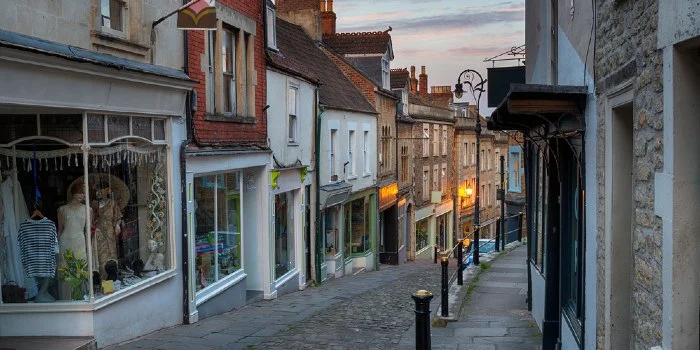10 January 2023 – Last year saw over 17,000 shops close their doors permanently, sparking fears of the end of the high street.
In 2022, a wave of store closures, at a rate of on average of 47 shops per day, has hit high streets across the UK. In total, 17,145 retail stores have closed in that year, up by almost 50% from the previous year, according to research by the Centre for Retail Research (CRR).
5,509 of these closures were the result of businesses going into administration. While 11,636 closures were due to rationalisation, where companies closed shops or locations to cut costs and reduce losses.
These store closures have also resulted in 151,474 job losses, of which 31,914 were caused by the company going into administration. 119,560 jobs were cut as part of rationalisation processes.
Although the number of store closures in 2022 is at a five-year high, the end of the high street as we know it has announced itself for several years now.
UK High Streets Have Been In Trouble For Years
If you have recently walked down your local high street, you will have noticed that many shops you visited a few years ago have now disappeared.
The 2000s were a good period for retailers, so the CRR. But when the financial crisis hit in 2008, many retailers were forced to close their stores, most famously Woolworths.
Because the financial crisis didn’t just impact on the finances of businesses but also individuals, consumer behaviour changed. “Shopping around” became a thing and people went back to looking for value for money.
As a result of this change in behaviour, many retailers had to start cutting their costs by reducing staffing levels and closing locations in smaller towns and suburbs. Many have seen this point as the start of the end of the high street in the UK.
Parallel to people wanting money for value, consumers also started to spend more money on leisure and less on material things, such as meals out, gym membership and spa treatments.
The rise of ecommerce also threatened the income of high street shops. Even before the financial crisis, the market share of online shopping started to rise, with 6.6% in 2006.
By 2013, the online market share had risen to 12.7%, in 2019 it increased to 19.2% and in 2022 its market share reached 26.5%.
As a consequence of the change in consumer behaviour, many retailers have left our high streets. Between 2018 and 2022, 75,305 stores have closed.
And not just small independent shops are forced to close, but bigger retailers too, with Debenhams one of the big victims in 2022.
Pandemic Accelerated The Inevitable
Although the trend towards online shopping has started a while ago, the pandemic has sped up this transition away from the high street.
Several lockdowns forced non-essential shops to close. The subsequent introduction of restrictions, made shopping online even more attractive. As a result, consumers kept away from the high streets and shopped online.
Working from home directives also kept people away from stores. This meant that people who would normally visit shops on their way to or from work, are now staying at home.
Sales figures show this change in behaviour clearly. London’s Oxford Street usually makes sales worth £10bn per year. But in 2020, this figure dropped to £2bn.
Even though all restrictions have been lifted in the UK and many have returned to their pre-pandemic behaviour, not everyone is comfortable to do so.
So while footfall in our high streets has increased, it is still 10% – 15% below pre-pandemic levels. This seems to confirm theories that we are approaching the end of the high street as we know it.
And the changed consumer landscape forces businesses to rethink their strategies, which is likely to cause more closures. The CRR is predicting that we will lose between 15,000 and 18,000 high street shops in 2023.
Rather than company failure, rationalisation now seems to be the main driver for closures as retailers continue to reduce their cost base at pace. A few big hitters may well fail, too.
Professor Joshua Bamfield, Director of the CRR
Advancements in technology also make online shopping more attractive. Mobile shopping in particular has caught on, allowing shoppers to buy at anytime, anywhere using their smartphone.
80% of online shopping is now done via a smartphone, research by the CRR suggests. And it is expected that this number will increase further in the next years.
The “New High Street”
So consumers make their purchases online and shops disappear from the high streets. But this does not spell the end of the high street, rather it undergoes a transformation.
A “new high street” emerges, where consumers don’t go to shop for goods, but to socialise with friends and visit health and beauty specialists.
Many retail stores have already become cafés, restaurants, beauty salons, hairdressers, gyms, bars and coffee shops.
So while we might see the end of the high street as we know it, it is not its death, rather a transformation to adapt to the new demands of consumers.






